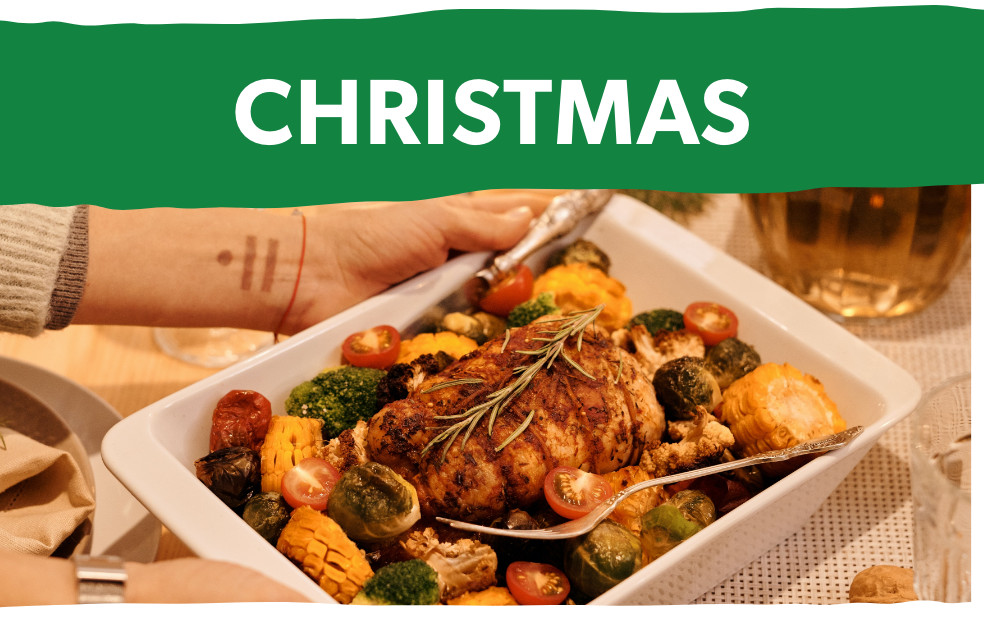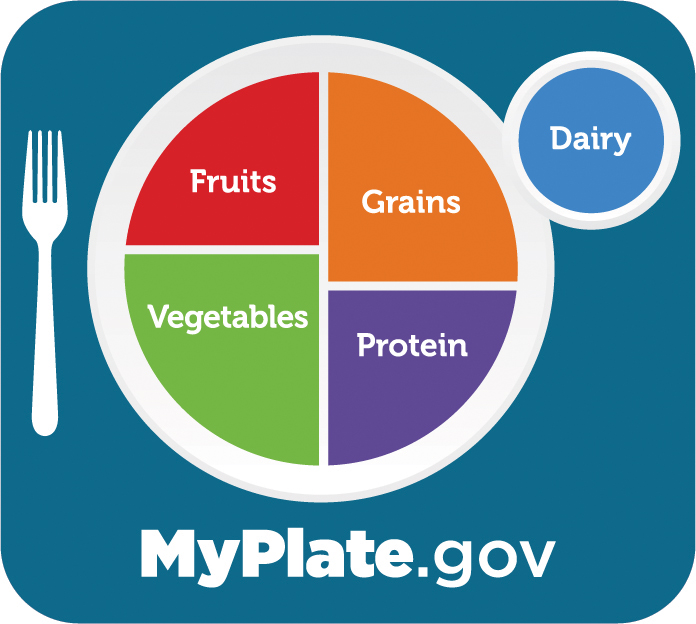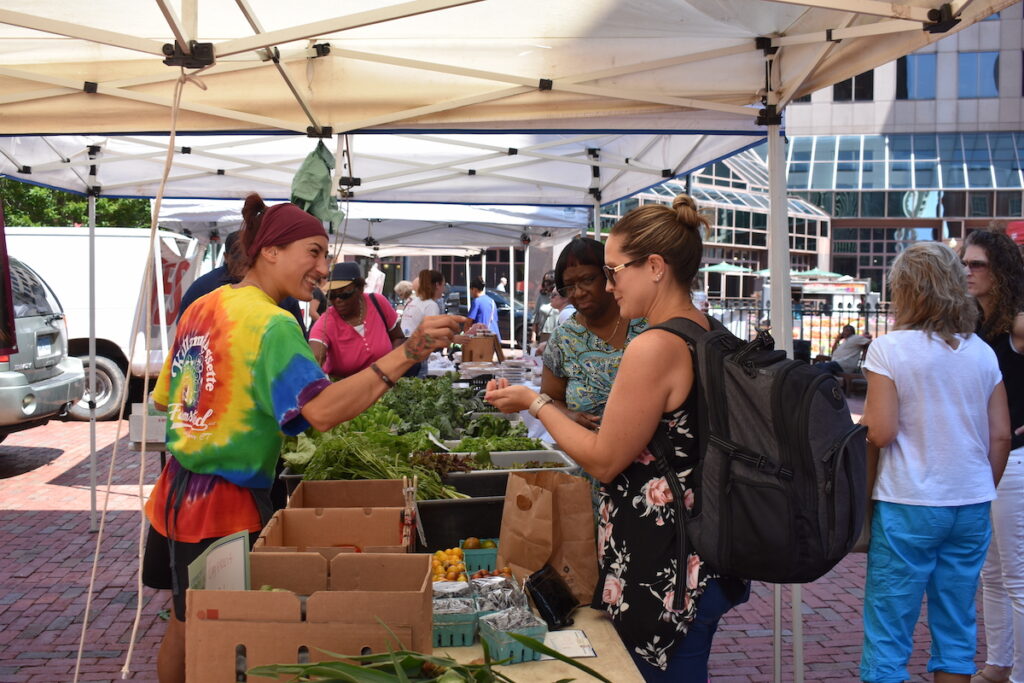No matter how you recognize the holiday season, feasting is a big part of the occasion. When families come together, the dinner table is the perfect place to celebrate with loved ones over a rich and hearty meal.
Holiday meal traditions go back generations, and fresh CT Grown ingredients can easily be used for many of the customary dishes served at holiday occasions. Here’s a look at why certain foods come to the table each year, with suggested recipes that can be made with a little help from your local farmers and producers.

Many traditional Hanukkah dishes are fried in oil, commemorating the well-known miracle of the menorah burning for eight days even though there was only enough oil for one day. Latkes and sufganiyot are particularly popular during the holiday.
Latkes are commonly prepared with potatoes, but often incorporate cheese as well. This ingredient honors the story of the heroine Judith, who saved her people by feeding an Assyrian general salty cheese and wine, then decapitating him.
Sweet potatoes are readily available at Connecticut winter farmers’ markets and go great with the following latke recipe. You can also pick up some CT Grown jelly or jam for this delicious sufganiyot treat.

Christmas meal traditions vary widely from country to country. Common Christmastime dishes include tamales in Mexico, minced pies in Eastern Europe, and fish in Italy and Scandinavia.
Despite the melding of many cultures in the United States, the big feast on Christmas Eve or Christmas is still largely rooted in English tradition. British celebrations feature a hearty main dish such as a turkey or roast, and Brussels sprouts also became a popular choice due to their hardiness as a winter crop.
For a traditional twist that makes a statement, try the following recipes with CT Grown pork, Brussels sprouts, and maple syrup.

Kwanzaa’s name derives from a Swahili phrase for “first fruits of the harvest,” and the celebration is rooted in the harvest festivals of sub-Saharan Africa.
The holiday incorporates many food-related symbols, including mazao (for harvest crops, represented by fruits/vegetables), and muhindi (for fertility and the future offered by children, represented by one ear of corn for each child in the family). Meals also typically incorporate collard greens, a symbol of fortune, and black-eyed peas, a symbol of good luck.
For the traditional Karamu feast on December 31, try these hearty dishes that use CT Grown foods like winter squash, chicken, garlic, and peppers.

The holiday season brings an onrush of classic holiday films, ranging from It’s a Wonderful Life and Frosty the Snowman to more recent movies like National Lampoon’s Christmas Vacation and Elf. Every family has a few favorites they like to cozy up with in the leadup to Christmas.
The 1945 romantic comedy Christmas in Connecticut has also started to gain more attention, especially in its namesake state. This year, the Goodspeed Opera House debuted a musical based on the film, and the show runs through December 30th.
The story follows Elizabeth Lane (Barbara Stanwyck), a magazine writer whose column chronicles her idyllic life with her husband and child on a Connecticut farm. The only problem: Elizabeth actually lives alone in New York City. When an invitation to host a returning war hero on the farm threatens to expose the ruse, Elizabeth tries to fabricate her fictional life on a farm owned by a friend. Hilarity ensues!

Christmas in Connecticut both showcases and lampoons the classic depictions of Christmas in a rural New England town, with scenes featuring horse-drawn sleigh rides and runaway cows. The film is also a surprising treasure trove for food lovers, as Elizabeth’s column is dedicated to farmhouse cooking.
In honor of the classic film and the new Goodspeed show, we’d like to share some dishes featured in Christmas in Connecticut and offer tips on how you can use CT Grown ingredients to prepare them.
Flapjacks
In both the film and musical, Elizabeth borrows her recipes from Felix Bassenak, a boisterous Hungarian chef and restaurant owner. Felix accompanies Elizabeth to the farm to aid in the deception and, in a memorable and amusing scene, tries to teach her how to make flapjacks (or, in his words, to “flip-flop the flop-flips”).
Flapjacks can be made with a few simple ingredients, including milk, eggs, butter, and maple syrup – all of which are produced in Connecticut year-round. Try the following recipes for a delicious Christmas breakfast!
Roast goose bernoise
Elizabeth’s lengthy Christmas menu is topped by the main course of roast goose bernoise with walnut dressing. Goose was once a popular tradition on Christmas and, while it has largely been replaced by other options such as turkey, some Connecticut farms continue to raise this bird.
“Bernoise” is likely referring to bearnaise sauce, a mouthwatering French topping made with butter and white wine. Visit Connecticut Wine Country to get the latter ingredient; use some for cooking, and serve the rest with dinner!
Candied sweet potatoes
Another pick from Elizabeth’s Christmas menu, candied sweet potatoes, are a delicious side dish for a holiday feast. This hardy vegetable stores well, and sweet potatoes harvested in the late autumn can still be found at a winter farmers’ market or grocery store. Pick up some Connecticut maple syrup to make that perfect glaze!
Potatoes au gratin
Felix’s restaurant serves up a robust line of courses, including potatoes au gratin. In Connecticut, potatoes are typically harvested through the end of the summer, but do so well as a storage crop that they are available year-round.
For a uniquely Connecticut spin on this recipe, try out the Lighthouse Inn potatoes. This dish was an iconic side at the New London inn, and is available once more after the inn reopened earlier this year.
Brussels sprouts a la Felix
Felix’s menu also includes “Brussels sprouts a la Felix”—again leaving to the imagination how this eccentric character may have prepared this side. Brussels sprouts have become a popular option for Christmas feasts due to their cold hardiness. Harvested here in October and November, Brussels sprouts do well in storage and are readily available throughout the winter.
In honor of Felix’s ancestry, we picked this Hungarian-style preparation:
Wishing you a delicious feast and a happy holiday!

Brace yourself, parents. The whirlwind school day mornings are almost here.
School days are often accompanied by a mad scramble to make sure your kids have everything they need, and that they haven’t somehow tied their shoes together. It’s tempting to hasten the process of preparing a lunch by simply throwing a few packaged items together. However, this can often result in a meal that’s lacking in healthy nutrients and high in fat, sodium, and added sugar.
What’s a good balance for a school lunch? The USDA’s MyPlate program recommends that half of a lunch plate be dedicated to fruits and vegetables, one-quarter to grains, and one-quarter to protein, with a modest amount of dairy also allowed.

Some healthy lunch and snack options include:
- Turkey pita wraps: Pita pockets make this recipe a snap. Just stuff in an array of healthy ingredients, including turkey, grapes, greens, and apple for a delicious midday meal!
- Mini quiche: A terrific, compact lunch that can be prepared in a muffin tin. This simple recipe combines potatoes, greens, and cheese, and can be prepared in bulk to simplify a week of meals
- Yogurt parfait with fresh fruit: This beautiful layered mixture of yogurt, granola, and fruit makes for a perfect snack. Choose your favorite fruit options, such as peaches, blackberries, or blueberries
- Cinnamon apple chips: Ditch the salty chips and try this recipe instead. An hour of baking time yields a yummy snack for your young scholars!
Tips for preparing a healthy lunch
Feeling pinched for time? Coping with picky eaters? These tips might help:
- Get started the night before: Sliced fruits and vegetables are an easy lunch side, but trying to cut them up before the bus arrives can be a stressful process. Get started the night before so your child’s lunch is ready in the morning.
- Involve the kids: Invite your kids to participate in preparing their lunches, including washing fruits or vegetables and chopping them up if they’re old enough to use a knife. You can go farther by enlisting their help in picking out healthy foods at the grocery store, taking a pick-your-own adventure to a Connecticut farm, or finding food options at farmers’ market.
- Have fun with it: Miniature cookie cutters let you prepare fruits and vegetables in creative ways. Chopped fruits and vegetables also make useful artistic materials for creating faces, animals, and other surprises that will delight your child when they open their lunch box.
- Invest in organizers: Instead of a lunch box or brown paper bag, consider an organizer that helps you organize the meal. This bento box approach helps keep foods separate and minimizes the chances of a smushed meal, which is more likely to go uneaten
Nutrition in Connecticut schools
For many years, Connecticut’s schools have stressed the importance of proper nutrition. USDA school nutrition programs are administered through the Connecticut State Department of Education, and foodservice professionals in schools develop menus designed to meet or exceed USDA dietary guidelines.
Students can enjoy breakfast and lunch options, along with healthy snack options and programs that offer fresh fruit and vegetables. Parents can look up more information on these options on school websites, which often contain additional information such as the calorie count of each meal.
In addition, Connecticut’s Farm-to-School Program educates students on gardening in nutrition while highlighting the importance of fresh, locally grown produce. Earlier this year, 13 school districts and educational partners were selected to receive Connecticut Grown for Connecticut Kids grants to support infrastructure improvements, experiential learning, farm-to-school planning, and pilot programs to support the purchase of CT Grown products for schools.

Celebrate Farmers’ Market Week and Support Your Local Farmers
It’s officially National Farmers’ Market Week (Aug. 7-13), the 32nd annual celebration of our farmers and the vital role farmers’ markets play in our food system.
There’s no better time to visit your local farmers’ market — not only to support the farms in your community — but to also enjoy local, fresh and healthy foods and high-quality products available at affordable prices. And with more than 100 certified farmers’ markets and farm stands located throughout Connecticut — you are sure to find a great farmers’ market right in your community.
“Connecticut’s farmers’ markets are a collective effort fostering direct-to-consumer sales, reinforcing the farm to plate connection, and providing a crucial entry point for new and beginning farmers,” said Agriculture Commissioner Bryan P. Hurlburt. “Farmers’ markets fuel local economies and provide increased access to nutritious, fresh CT Grown food for our most vulnerable populations.”
Farmers’ Market Nutrition Program Underway Through November 30
Need another reason to visit your local farmers’ market? Here’s one!
Farmers’ markets offer food nutrition programs — allowing consumers to stretch their food dollars with the purchase of fresh, locally grown farm products while supporting new and beginning farmers, as well as established producers.
The Farmers’ Market Nutrition Program (FMNP), administered by the Connecticut Department of Agriculture, received additional funding through the state legislature for eligible individuals to redeem checks at certified farmers’ markets or farm stands throughout the state. Eligible individuals include seniors over the age of 60 and women, infants, and children (WIC) who meet certain guidelines. Here in Connecticut, eligible WIC and Senior participants can receive up to $32.00 in Farmers’ Market Nutrition Program checks to purchase fresh Connecticut Grown fruits, vegetables, cut herbs, and honey. Newly added to the list of eligible items this year are eggs.
Many farmers’ markets also participate in the Supplemental Nutrition Assistance Program (SNAP) — some even offering double purchasing power. In 2021 alone, over $100 million in federal nutrition benefits were redeemed at farmers’ markets across the nation.
Check Distribution Sites
Find a Senior FMNP check distribution site
Check Redemption Sites
Find Senior FMNP authorized redemption locations
Recipe ideas using products from Connecticut farmers’ markets
Need ideas on how to incorporate CT Grown products into your home-cooked meals? Here are some great recipes that are affordable, easy to make, and of course, delicious! The best part, each of these recipes are centered around ingredients grown by Connecticut farmers, and available at a reasonable price.
Sauteed Green Beans with Garlic (Green Bean Market Price: $4.00/quart | Garlic Market Price: $5/head): Snap into a refreshing and zesty summer side dish with locally grown green beans — in season now!
Greek Stuffed Eggplant (Eggplant Market Price: $4.00/quart): Light, yet filling, Connecticut Grown eggplant is the centerpiece of some great healthy recipes — including this Greek inspired dish that can incorporate several other locally grown products (tomatoes, peppers, feta, etc.).
Kale and Peach Smoothie (Kale Market Price: $3.00/bundle | Peach Market Price: $5.00/quart): Healthy and refreshing, this recipe can be made using several locally grown products. Want to make a special treat? Freeze it and make smoothie popsicles — refreshing on a hot summer day.
A list of all certified farmers’ markets can be found at www.CTGrown.gov/farmersmarkets or visit www.CTGrown.org to access the interactive map to find a farmers’ market or farm stand near you.